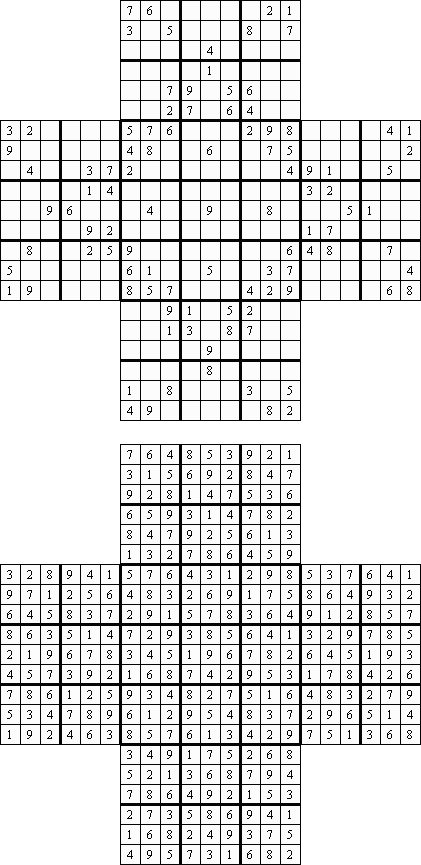
Gattai is a Japanese word meaning merged or fused; this term is used for overlapping sudoku. A number after the word "Gattai" indicates how many 9 x 9 sudokus are in the puzzle ("Gattai-3", "Gattai-4", "Gattai-5" etc.).
Samurai Sudoku ("Gattai-5") is one of the sudoku variation with overlapping sudoku grids. The puzzle consists of five grids, one in the center and the other 4 overlapping each corner grid of the central one. This means that the numbers must be placed correctly for all the five puzzle squares.

Jigsaw Samurai Sudoku (sudoku with the regions of irregular shape):

Flower Sudoku ("Musketry Sudoku") has five sudoku puzzles in layout, similar to Samurai Sudoku. However, these puzzles overlap each other much more than in Samurai. The center grid is fully covered by the remaining four sub-puzzles.

Named for the warrior monks of medieval Japan, Sohei Sudoku has four merged grids. Each grid has two overlapping areas.

Kazaguruma ("Windmill Sudoku") consists of five grids, one in the center and the other 4 overlapping the central one. This means that the numbers must be placed correctly for all the five puzzle squares.

Butterfly Sudoku is the variation of the original sudoku. The puzzle consists of four grids 9 x 9. The numbers must be placed correctly for all the four puzzle squares.

Cross Sudoku has five merged grids. The numbers must be placed correctly for all the five puzzle squares.

Gattai-3 consists of three grids 9 x 9.

Twodoku (also known as "Sensei Sudoku", "DoubleDoku") consists of two grids 9 x 9. The numbers must be placed correctly for both puzzle squares.

The ways of grids' overlapping may be various. Some puzzles may have the additional conditions; for example, the main diagonals also contain the digits 1 through 9:

The program can solve Twodoku which contains the regions of irregular shape:

Triple Doku consists of three grids 9 x 9. The numbers must be placed correctly for all puzzle squares.

The formats of sudoku files: